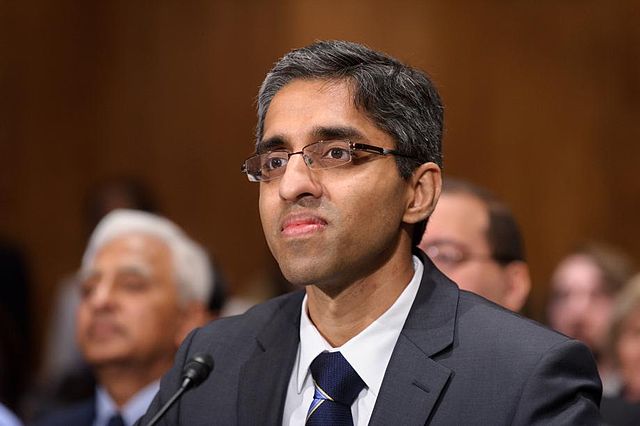
The Surgeon General of the United States released a new report on health disparities related to tobacco use. The report finds that despite the nation’s substantial progress in reducing cigarette smoking and secondhand smoke exposure in the overall U.S. population, that progress has not been equal for all population groups.
Disparities in tobacco use persist by race and ethnicity, income, education, sexual orientation and gender identity, occupation, geography, behavioral health status, and other factors. Additionally, cigarette smoking and secondhand smoke exposure continue to cause nearly half a million deaths a year in the United States—nearly one in five of all deaths.
“Tobacco use continues to decline. Americans increasingly understand tobacco products are dangerous and addictive and many are taking advantage of available tools to help them quit. That’s great news,” said Xavier Becerra, HHS Secretary for Health. “Smoking is still the leading cause of preventable death in the United States. That’s unacceptable. We will keep working until tobacco is no longer a menace to individuals and families across the nation. We will continue our efforts to improve health equity and support communities that remain the most vulnerable.”
This report expands upon the 1998 Surgeon General’s report on tobacco use among U.S. racial and ethnic groups to include data and trends by additional demographic factors and their intersection. This report also summarizes research on factors that influence tobacco-related disparities, and outlines actions everyone can take to eliminate these disparities and advance health equity in the United States.
“Tobacco use imposes a heavy toll on families across generations. Now is the time to accelerate our efforts to create a world in which zero lives are harmed by or lost to tobacco,” said Surgeon General Dr. Vivek Murthy. “This report offers a vision for a tobacco-free future, focused on those who bear the greatest burden, and serves as a call to action for all people to play a role in realizing that vision.”
Tobacco-Related Disparities Today
Smoking has declined more than 70% in the United States since 1965. However, progress achieved through improvements in tobacco-related policies, regulations, programs, research, clinical care, and other areas, has not resulted in the same outcomes across all U.S. population groups.
Cigarette smoking is higher among American Indian and Alaska Native people than other racial and ethnic groups, and smoking among men and women living in poverty is more than twice as common compared to those not living in poverty. Smoking is also higher among adults with lower levels of education; people who identify as gay, lesbian, or bisexual; adults who work in manual labor and service jobs; people who reside in rural areas; adults who reside in the Midwest or South; and people living with a mental health condition or substance use disorder.
Despite the good news that deaths due to secondhand tobacco smoke exposure have declined by more than 50% since 2006, among people who don’t smoke, secondhand smoke exposure remains disproportionately high among children, Black people, people with lower incomes, and adults with lower levels of education. The magnitude of these disparities has increased since 2000.
“While there is much to celebrate, the progress has not been equal across all populations or communities. Progress, in the form of improvements in tobacco-related policies, regulations, programs, research, clinical care, and other areas, has not resulted in the same outcomes for everyone,” said Adm. Rachel L. Levine, HHS Assistant Secretary for Health. “We have not made progress unless we have all made progress.”
While cigarette smoking remains the leading preventable cause of disease and death in the United States, disparities exist in smoking-related health outcomes. For example, American Indian and Alaska Native adults have the highest prevalence of COPD, and Black men have the highest incidence and death rate due to lung cancer of any racial and ethnic group of men or women.
Factors that Influence Tobacco-Related Disparities
Multiple factors influence tobacco-related health disparities, including:
- Poverty, racism, discrimination, and other social determinants of health—such as where people live, how much money they make, access to health care – and exposure to tobacco product advertising and marketing.
- The tobacco industry, whose tactics include concentrated marketing of tobacco products in neighborhoods with greater percentages of Black and Hispanic people, and residents with lower incomes; and marketing flavored products, including menthol, to specific groups. Menthol can make it easier to start smoking and harder to quit.
- Financial and other obstacles to accessing treatments proven to help people quit using tobacco.
- Social and environmental influences, such as whether family and friends smoke, smokefree air policies at home and work, and stress and exposure to dangers in the workplace.
- Gaps in tobacco prevention and control protections, such as smokefree air policies.
- Preemptive laws that block communities from protecting their members’ health.
What Can be Done to Eliminate Tobacco-Related Disparities
Everyone has a role to play in eliminating tobacco-related disparities, according to a press release.
“To do this, we must:
- Address the factors that influence tobacco-related disparities, such as inequitable access to health care; high-quality education; and safe, smokefree housing and workplaces.
- Drive down the appeal, addictiveness, and availability of commercial tobacco products, such as by placing restrictions on the sale of flavored tobacco products, establishing a maximum nicotine yield to reduce the addictiveness of cigarettes and other combusted tobacco products, and regulating the number of stores that sell tobacco.
- Equitably implement strategies proven to reduce commercial tobacco use and exposure to secondhand smoke. These strategies include tobacco product price increases, comprehensive smokefree air policies, effective counter-marketing and media campaigns, and evidence-based quitting resources.
- Encourage friends, family members, and coworkers—including youth—to quit the use of tobacco products and support them in getting help to quit through resources, such as 1-800-QUIT-NOW and smokefree.gov.”
For Surgeon General’s report information and resources, including the full report, a report executive summary, a consumer guide, and fact sheets, visit www.SurgeonGeneral.gov or www.CDC.gov/EndTobaccoDisparities


















